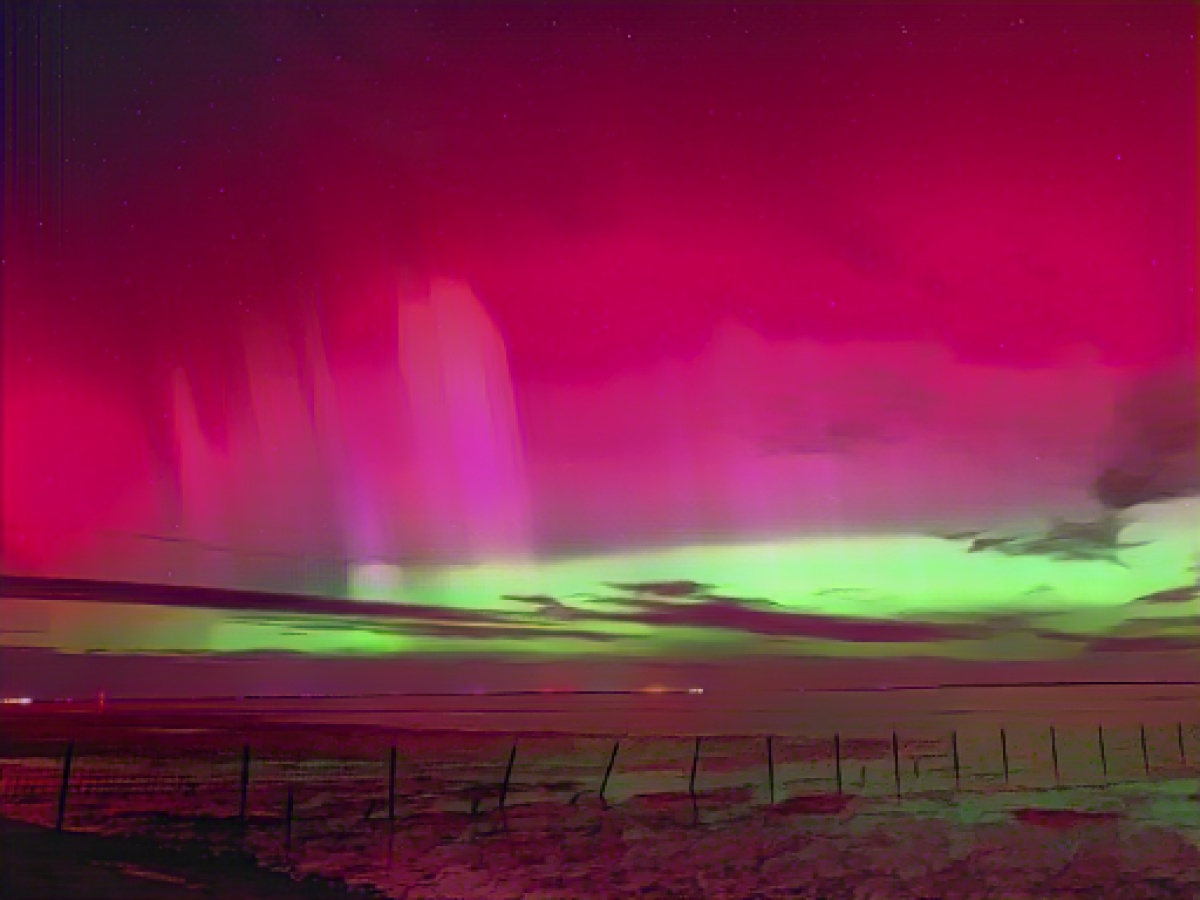Northern lights over Thuringia: Observatory sets up telescope
Auroras are normally more visible in the night sky in northern climes. However, people in Thuringia also have a good chance of observing the play of green, red and pink colors in the coming period. Eike Guenther from the state observatory in Tautenburg explained that this is due to the current increase in solar activity, which is likely to continue into next year. Recently, however, it has often been cloudy at night, which is why sightings have been difficult. In many places in Germany, people have observed auroras in recent days and weeks.
These lights occur when particles emitted by the sun penetrate the earth's atmosphere, as Guenther said. Normally, this can be observed in a ring around the poles. However, there is more solar activity at regular intervals and the play of colors is also visible in more southerly regions. The cycle for solar activity is usually eleven years.
According to Guenther, it is currently possible to say with one day's notice when the play of colors will arrive on Earth. Radiation bursts on the side of the sun facing the Earth are observed for this purpose. The particles travel at 1000 kilometers per second towards the earth.
The state observatory is currently building a telescope for solar research, and the first live images should be available in spring. "We will then be able to look through the sun and measure sunspots on the far side," explained Guenther. The number of sunspots is something of a measure of the sun's activity - the more of them that are discovered, the more likely solar flares are. The particles hurled into space can then cause auroras.
Guenther said that the new telescope could then be used to determine when there is a large group of spots on the back side of the sun, which could eventually arrive on the front side and lead to auroras. This would theoretically allow the lights to be predicted weeks in advance.
The colorful hues of the northern lights are a result of solar particles interacting with Earth's atmosphere, making these celestial displays possible even in southerly regions like Thuringia due to increased solar activity. With the new telescope at the state observatory, scientists like Eike Guenther may soon be able to predict when large groups of sunspots on the back side of the sun will migrate to the front, potentially enabling aurora sightings to be forecasted weeks in advance, adding a scientific twist to the colorful science of astronomy.
Source: www.dpa.com








